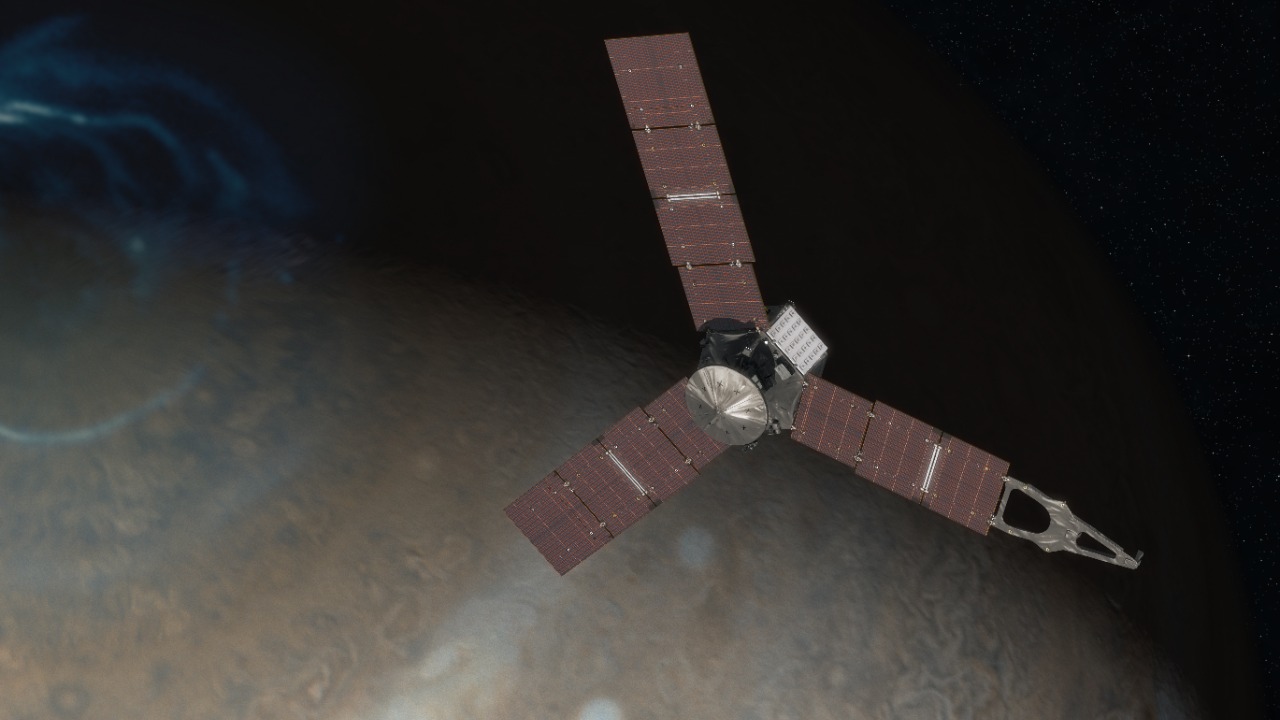
The interstellar comet 3I/ATLAS is on a trajectory that could soon lead to a fascinating encounter with NASA’s Jupiter probe. As this comet approaches Jupiter, it may shower the spacecraft with charged particles, offering a unique opportunity to study an object from beyond our solar system. Recent images have captured the comet’s tail expanding as it nears the Sun, providing a visual testament to its dynamic nature. This rare event not only promises to enhance our understanding of interstellar objects but also holds potential insights into the composition and behavior of such cosmic wanderers.
Background on Comet 3I/ATLAS
Comet 3I/ATLAS, designated as an interstellar object, is a rare visitor from beyond our solar system. Its path toward Jupiter is notable for its potential to bring the comet into close proximity with the planet, activating its features as it interacts with the Sun’s energy. This trajectory positions 3I/ATLAS as a significant subject of study, particularly because it originates from outside our solar system, earning it the label of an interstellar invader. The comet’s journey offers a rare glimpse into the characteristics of objects that travel vast distances across the galaxy.
The significance of 3I/ATLAS lies in its origin and the scientific opportunities it presents. As an interstellar object, it carries with it the potential to reveal information about the materials and conditions present in other star systems. Its impending approach to Jupiter provides a chance to observe how such an object behaves when subjected to the gravitational and magnetic influences of a major planet in our solar system.
Recent Observations of the Comet’s Activity
Recent observations have captured the dramatic growth of 3I/ATLAS’s tail as it moves closer to the Sun. These new photos reveal the comet’s increasing activity, marked by the development of its tail, which is a clear indicator of outgassing and particle emission from its nucleus. This process occurs as the comet’s icy components sublimate under the Sun’s heat, releasing gas and dust into space.
The timing of these observations, particularly those made on September 8, 2025, provides real-time insights into the evolving structure of the comet. As the tail grows, it not only highlights the comet’s active state but also offers clues about its composition and the types of materials being released. These observations are crucial for understanding the physical and chemical properties of interstellar comets, which can differ significantly from those formed within our solar system.
NASA’s Jupiter Probe and Its Role
NASA’s Jupiter probe is strategically positioned to potentially detect the incoming particles from Comet 3I/ATLAS. Equipped with instruments capable of measuring charged particles and magnetic field interactions, the probe is well-suited to capture data during the comet’s close pass. This capability is part of its ongoing mission to study Jupiter and its environment, which now aligns with the comet’s passage for opportunistic science.
The probe’s instruments are designed to analyze the charged particles that may emanate from the comet’s coma and tail. By measuring these particles, scientists can gain insights into the comet’s composition and the processes occurring as it interacts with Jupiter’s magnetosphere. This interaction provides a unique opportunity to study the dynamics of interstellar objects within our solar system’s context.
The Predicted Particle Shower and Its Effects
As Comet 3I/ATLAS approaches Jupiter, projections suggest it could shower the probe with charged particles. These particles, including ions and electrons, are expected to originate from the comet’s coma and tail. The interaction between these particles and the probe’s instruments could yield valuable data on the comet’s characteristics and the nature of its emissions.
While the potential particle shower poses some risks to the probe’s operations, it also offers significant scientific benefits. By analyzing the types of particles detected, researchers can infer details about the comet’s composition, such as the presence of ices and dust from another star system. This information is crucial for understanding the building blocks of interstellar objects and their potential influence on solar system dynamics.
Scientific Revelations from the Encounter
The encounter with Comet 3I/ATLAS presents an unprecedented opportunity to learn more about interstellar invaders. By detecting particles from the comet, scientists can gain insights into its composition, including the types of ices and dust it carries from another star system. This data is invaluable for piecing together the story of how such objects form and evolve over time.
Moreover, the interaction between the comet’s outflow and Jupiter’s magnetosphere could provide new perspectives on the behavior of interstellar objects within a planetary system. Studying these interactions can help scientists understand the broader implications of interstellar objects on solar system dynamics and their potential to influence planetary environments.
Overall, the close approach of Comet 3I/ATLAS to Jupiter and the potential particle shower on NASA’s probe offer a rare chance to explore the mysteries of interstellar objects. This event not only enhances our understanding of such cosmic visitors but also contributes to the broader field of planetary science and the study of our solar system’s interactions with the galaxy beyond.